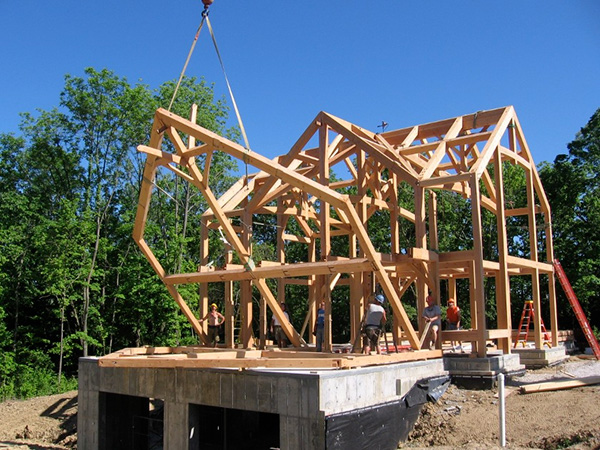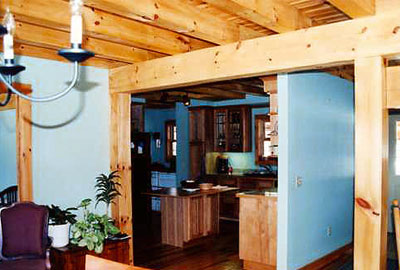At Crockett, we are preparing to launch our newest model, The Susquehanna. Before we do, I thought it would be helpful to spend some time on the difference between a Post and Beam and a Timber Frame Home.
Timber Frames
Crockett’s Timber Frame Homes are all true handcrafted mortise and tenon joinery. There are no plates, no lags, no spikes, no screws, etc. Mortise and tenon is a popular type of wood joint used to connect two pieces of wood. The tenon is a peg and the mortise is the slot the peg or tenon is inserted into.
Often our Timber Frames will feature curved Y braces and trusses. Truly a work of art showcasing heavy timbers.
Once the frame is built, it is a self supporting structure. We then envelope the frame with Structural Insulated Panels. More on these panels are covered a few paragraphs down.
View our webpage on Timber Frames to learn more.
Post and Beams
Crockett’s Post and Beam Homes look very similar to a Timber Frame and can include Y braces at the preference of the homeowner. Simply put, a post (vertical timber) and a beam (horizontal timber) are lagged together creating a framework for the SIP’s.
Would you like to learn more about Crockett’s Post and Beams? Click here for our webpage.
Structural Insulated Panel (SIP) Homes are an energy efficient alternative to conventional stick frame construction. SIP’s offer an R-value of 26 opposed to conventional homes with an R-19. The SIP’s that Crockett uses comes with many warranties which protect you, the homeowner. These include:
Stabilized R-value that will remain an R-26 and not break down over time like the batt insulation in most current homes.
Panels will not delaminate or deteriorate.
Damage from decay and termite damage.
Stay tuned, our next Blog will talk about Crockett’s newest Hybrid Model, The Susquehanna.
This model features a timber frame main living area with structural insulated panels in bedrooms and bathrooms.






